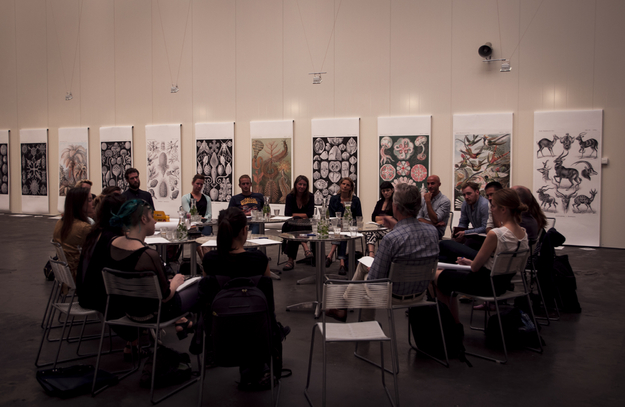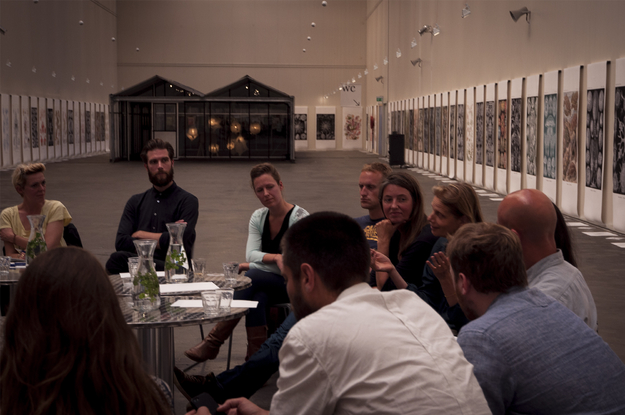Willem Velthoven (Mediamatic) opened the meeting by explaining the motivational factors behind this get together. For the field of bio art and design to develop, its position needs to be reinforced and take increasing priority in not only the cultural, but also political agenda. Knowledge on the parameters of the field should reach a broader audience and an approach needs to be formulated in order to move towards a lobby and fundraising opportunities. The intention of the meeting can be seen as the beginnings of a collaboratory approach, working towards a manifesto.
A need for collaboration
The conversation was moderated by Danielle Arets. Arets’ observed that all those present focused on the noble aim of generating and spreading of knowledge rather than generating funds or creating a platform. In summary, a desire for collaboration between art and the Life Sciences in a meaningful way, bringing artists and scientists together, and creating synergy between businesses coloured most introductions. Notably, there seems a general awareness for the need of a practical approach: getting both artists and students into the labs for hands on experience. A point of discussion remains concerning the exact relationship, both now and in the future, between art and science, which centred on the question of what one field contributes to the other. What can biology gain from art? How can artists learn from the Life Sciences?
The need for getting into the lab, the working environment of the scientists, seems clear, but the definition of what constitutes the role of ‘the artist’ remained uncertain. This leads to a critical issue yet to be defined in terms of the art-science collaboration: which model for collaboration should be followed that honours the qualities and expertise of both sides?
Collaborational thresholds
The difficulties in communication between the two worlds challenge the collaborations to some extent. Whilst it has become slightly easier or more normalized for designers and artists to move into the labs, reaching a balanced exchange of knowledge remains another question. For one, the aims and approaches of designers, artists and scientists can differ greatly. In some respect, this can be attributed to the expectations that come with working in this relatively new way. For scientists, it is sometimes difficult to answer to the directed questions of designers and artists, as their knowledge can be too diverse and widespread to provide a clear-cut way of how to make applied ideas work. For designers and artists, on the other hand, it can be difficult to understand that it is still necessary to experiment in the lab, as answers are not just ready for them.
In any case, a relationship in which the artist or designer is ‘merely’ the translator of the work of the scientist should be avoided. It is clear that the aim for both scientists and designers/artists is to reach an understanding so that a true exchange of knowledge takes place. As such, both sides can make use of each other’s differences, leading to fruitful, non-hierarchal relationships.
A workable model
It is clear that, in order to move forward and gain grounds, collaboration means getting rid of the individual names and unique projects working with living organisms. Together, it will be necessary to find a common language and to continue communicating about long-term goals and use of expertise and tools in the field. On the one hand, this constitutes mapping the field of biodesign internally to grasp its constitution of different agents. On the other, it means working towards the outward presentation. Several questions arise: How can we simplify the knowledge and complex information for a broad audience? How can developments in the field reach the public (in terms of display)? How can the value of bio art and design be communicated to the public and government bodies? If the goal is to include society and induce understanding, then the public needs to become involved by being addressed clearly. A shared opinion seemed to be that if symbiosis between the different disciplines and parties is achieved, addressing the outside world becomes an easier transition.

